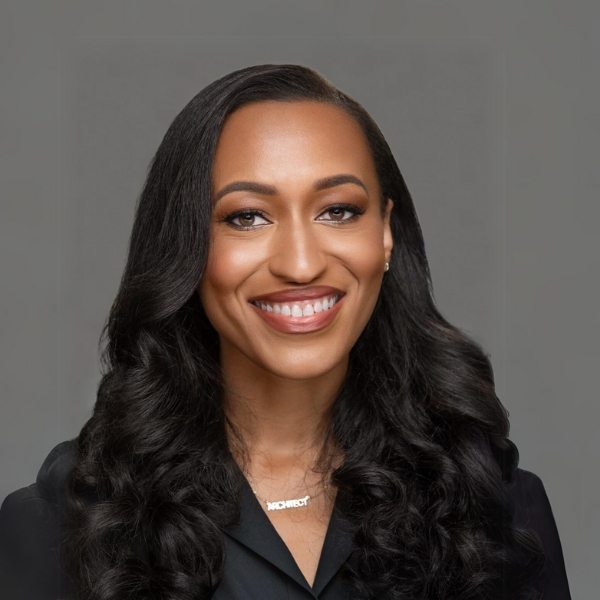
AIA|LA ARCHITECTS IN ACTION:
Questions for Adaeze Cadet AIA, NOMA, NCARB, LEED BD+C – Design Principal, HOK
When did you realize architecture was your calling, and what were some defining experiences that shaped your personal values and outlook on the built environment?
As long as I can remember, I have had a fascination with designing spaces. In kindergarten, I would organize the other kids to build our playhouse out of gigantic wooden blocks exactly according to the vision I had in my head. My teacher took notice and told my mom who started exposing me to art, architecture, and LEGO sets. As I learned more about architecture, I realized that while America was filled with people of diverse backgrounds, our built environment was overwhelmingly designed by white men. This further increased my drive to become an architect so that I could bring a missing perspective to the built environment and design spaces that are more inclusive and empathic to the communities and existing cultures we build in.
Have you faced any specific challenges or biases based on your background or identity that influenced your approach to architecture and your commitment to justice, inclusion, and diversity? If so, how did you overcome them, and what lessons did you learn?
Of course, I don’t look like what people picture as an architect or as a design principal leading a studio, so I have faced many challenges and biases throughout my journey. One that could have changed the course of my career was with my very first studio professor. During my first desk crit, he told me my designs were not good and that I should change my major. For the first time since I was 8, he had me questioning what I knew was my life’s purpose. I looked at what my classmates were doing, and I knew my work was just as good if not better, so I kept at it. When we had our final critique, the critics raved about my project. That helped me realize I was in fact talented, and it was his bias that was trying to push me out of an industry where he had decided I did not belong. I used that lesson to keep pushing to achieve my dreams and not let people’s preconceived notions define who I am. It also made me realize how important it is to have more diversity in our universities with professors and push beyond the Eurocentric architecture that makes up the majority of the curriculum. That way students of color can feel supported and see themselves in what they are learning which is the root of true inclusion.
What advice would you give to young architects or aspiring design professionals who are passionate about social change and want to use their creativity to make a difference?
Go for it! You don’t have to wait for permission to find opportunities to design in ways that support social change to make a difference. For example, if you are designing a low-income housing project you can create concepts that celebrate the community’s culture, suggest adding a community room to the program, or share outdoor space like a community garden especially if your project is in a food desert. I know from my own experience when you are early in your career it can feel daunting to speak up and share your ideas. But it’s important to realize that you are in this space for a reason and your passions and perspectives are valuable. Try testing out your ideas with a few peers and then work your way up to internal team meetings or charrettes. Even if only one idea gets incorporated it is a step in the right direction and it does make a difference.
Adaeze Cadet AIA, NOMA, NCARB, LEED BD+C – Design Principal, HOK
As design principal, Adaeze provides design leadership for projects in HOK’s Los Angeles studio. She is a member of the firm’s board of directors and design board.
Adaeze brings over two decades of experience as an innovative, successful and dedicated design professional. Her award-winning designs have been recognized and praised by various design publications. She held positions in San Francisco and Dallas before relocating to Los Angeles in 2013.
Adaeze is an active speaker, a mentor to individuals and groups, serves as a juror and is a member of the USC Architecture Guild Board. Her industry involvement extends to the American Institute of Architects (AIA), the Southern California chapter of the National Organization of Minority Architects (SoCal NOMA) and the Urban Land Institute (ULI).







